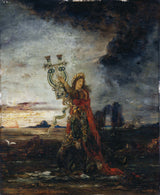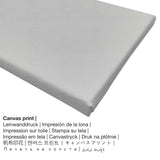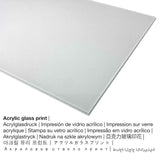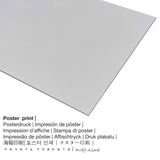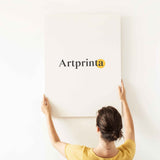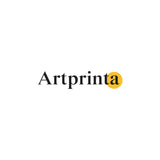Gustave Moreau, 1891 - Arion - mbipụta nka mara mma
Ụtụ gụnyere. Mbupu gbakọrọ na ndenye ọpụpụ.
Ozi ngwaahịa nka dị omimi
Na 1891 na French artist Gustave Moreau created the 19th narị afọ sere Arion. Emere izizi ihe karịrị afọ 120 na nha: Ogologo: 45,5 cm, obosara: 37 cm. Oil, Wood (material) was used by the painter as the medium of the artwork. The original artwork's inscription is the following: "Signature - Bottom left, with dedication: "Gustave Moreau / her dear friend and colleague J. Chaplain"". Furthermore, this work of art belongs to the Petit Palais - Musée des Beaux-arts de la Ville de Paris nchịkọta dijitalụ, nke dị na Paris, France. We are happy to state that the public domain masterpiece is provided with courtesy of Petit Palais Paris.Ihe kredit nke ọrụ nka bụ: . E wezụga nke a, nhazi ahụ dị n'ime Eserese usoro na oke nke 1: 1.2, nke pụtara na ogologo bụ 20% mkpụmkpụ karịa obosara. The painter, sculptor Gustave Moreau was a European artist from France, whose style can mainly be classified as Symbolism. The painter lived for a total of 72 afọ Amụrụ na 1826 na Paris, Ile-de-France, France wee nwụọ n’afọ 1898.
Nye iwu ihe kacha amasị gị
In the dropdown lists right next to the product you can select the size and materialaccording to your individual preferences. Choose among the following product options now to match your preferences in size and material:
- Mpempe akwụkwọ mmado ebipụtara na akwa akwa: The Artprinta poster is a printed canvas with a slightly rough surface structure. A print poster is suited for framing the fine art print in a custom frame. Please bear in mind, that depending on the absolute size of the canvas poster print we add a white margin of something between 2-6cm around the print, which facilitates the framing with your custom frame.
- Mbipụta iko acrylic na-egbuke egbuke (nke nwere ezigbo mkpuchi iko): An print on acrylic glass, which is sometimes referred to as a an art print on plexiglass, will transform the original into great home decoration. The work of art is made with the help of state-of-the-art UV direct print technology. This makes impressive and vivid colors.
- Aluminom ihe eji eme ihe: This is a metal print made on aluminium dibond with an impressive depth - for a modern impression and non-reflective surface structure. For the Direct Print On Aluminum Dibond, we print the selected artwork onto the aluminium composite surface. The white & bright parts of the original artpiece shine with a silk gloss but without the glare.
- Mbipụta kwaaji: The printed canvas, not to be confused with a canvas painting, is a digital replica printed onto cotton canvas. A canvas produces the typical impression of three-dimensionality. Your canvas of this work of art will let you turn your art print into a large size work of art as you would see in a real gallery. How can I hang a canvas on the wall? Canvas prints are relatively low in weight, which implies that it is easy to hang your Canvas print without the support of any wall-mounts. That is why, a canvas print is suited for any type of wall.
Disclaimer: We try to depict the products in as much detail as possible and to demonstrate them visually on the various product detail pages. At the same time, the pigments of the printing material and the print result might diverge marginally from the image on your screen. Depending on the settings of your screen and the condition of the surface, not all colors are printed one hundret percent realistically. Because all fine art prints are processed and printed manually, there may as well be slight differences in the size and exact position of the motif.
Banyere ihe a
| Nkewa edemede: | mmepụta nka |
| Usoro mmeghari: | dijitalụ mmeputakwa |
| Usoro mmepụta: | UV kpọmkwem obibi |
| Production: | arụpụtara na Germany |
| Stockdị ngwaahịa: | na mmepụta ihe |
| A na-atụ aro iji ngwaahịa eme ihe: | foto mgbidi, ụlọ ihe osise nka |
| Nhazi: | usoro eserese |
| Oke akụkụ: | 1: 1.2 |
| Mmetụta akụkụ onyonyo: | ogologo bụ 20% mkpụmkpụ karịa obosara |
| Ngwa ngwaahịa dị: | Mbipụta iko acrylic (nwere ezigbo mkpuchi iko), mbipụta ọla (aluminium dibond), mbipụta akwa akwa, mbipụta akwụkwọ mmado (akwụkwọ kwaaji) |
| Nha n'arọwa n'elu ihe ndọtị (mbipụta akwa akwa): | 50x60cm - 20x24", 100x120cm - 39x47", 150x180cm - 59x71" |
| Mpempe iko acrylic (nwere ezigbo mkpuchi iko) nha: | 50x60cm - 20x24", 100x120cm - 39x47", 150x180cm - 59x71" |
| Ụdị akwụkwọ mmado (akwụkwọ kwaaji) dị iche iche: | 50x60cm - 20x24", 100x120cm - 39x47" |
| Mpempe akwụkwọ Dibony (ihe alumnium) nha: | 50x60cm - 20x24", 100x120cm - 39x47" |
| ụba: | ngwaahịa anaghị emebi emebi |
Ozi ahaziri na nka
| Aha eserese: | "Arion" |
| Nhazi nke ọrụ nka: | sere |
| Category: | nkà nke oge a |
| Time: | 19th narị afọ |
| Emepụtara n'afọ: | 1891 |
| Afọ nka: | gbara afọ 120 |
| Agba na: | Mmanụ, Osisi (ihe) |
| Akụkụ izizi: | Ogologo: 45,5 cm, obosara: 37 cm |
| mbinye aka izizi nka: | Signature - Bottom left, with dedication: "Gustave Moreau / her dear friend and colleague J. Chaplain" |
| Ụlọ ihe ngosi nka / ebe: | Petit Palais - Musée des Beaux-arts de la Ville de Paris |
| Ebe ngosi nka: | Paris, France |
| E Nwere na: | Petit Palais - Musée des Beaux-arts de la Ville de Paris |
| Ụdị nka nka: | ngalaba ọha |
| Site n'aka: | Petit Palais Paris |
Nkọwa onye nka
| Aha onye nka: | Gustave Moreau |
| Aha ndị ọzọ: | Gustave Moreau, מורו גוסטב, ギユスターヴ, moreau gustave, Moreau Gustave, G. Moreau, Moreau |
| okike onye nka: | nwoke |
| Obodo onye nka: | French |
| Ọrụ onye na-ese ihe: | onye ese, ọkpụkpụ |
| Mba onye si: | France |
| Nhazi nke onye nka: | omenkà nke oge a |
| Ụdị nke onye na-ese ihe: | Akara |
| Nwụrụ na afọ nke: | 72 afọ |
| Afọ ọmụmụ: | 1826 |
| Ebe omuma: | Paris, Ile-de-France, France |
| Nwuru: | 1898 |
| Obodo ọnwụ: | Paris, Ile-de-France, France |
© nwebisiinka, Artprinta.com
What does the curator team of the Petit Palais - Musée des Beaux-arts de la Ville de Paris state about the 19th century work of art from the painter and sculptor Gustave Moreau? (© Nwebiisinka - Petit Palais - Musée des Beaux-arts de la Ville de Paris - www.petitpalais.paris.fr)
The painting depicts the poet Arion, saved from drowning, carried by a dolphin. Standing on the animal, richly dressed and wearing a golden laurel wreath, it strum lyre that holds up above it. The rocks which limit the horizon silhouetted against a stormy sky illuminated by the setting sun. Seagulls fly over the waves.
In Greco-Roman mythology, Arion is a musician from Methymna on the island of Lesbos. Herodotus tells that, returning from Taranto, Arion was seized by pirates; before being thrown into the sea, he asked to sing one last time and dolphins, attracted by his music brought him back to earth safe and sound.
Arion (Greek mythology)
mythological figure, Lyre, Dolphin, Laurel Wreath, Sunset, Seagull

